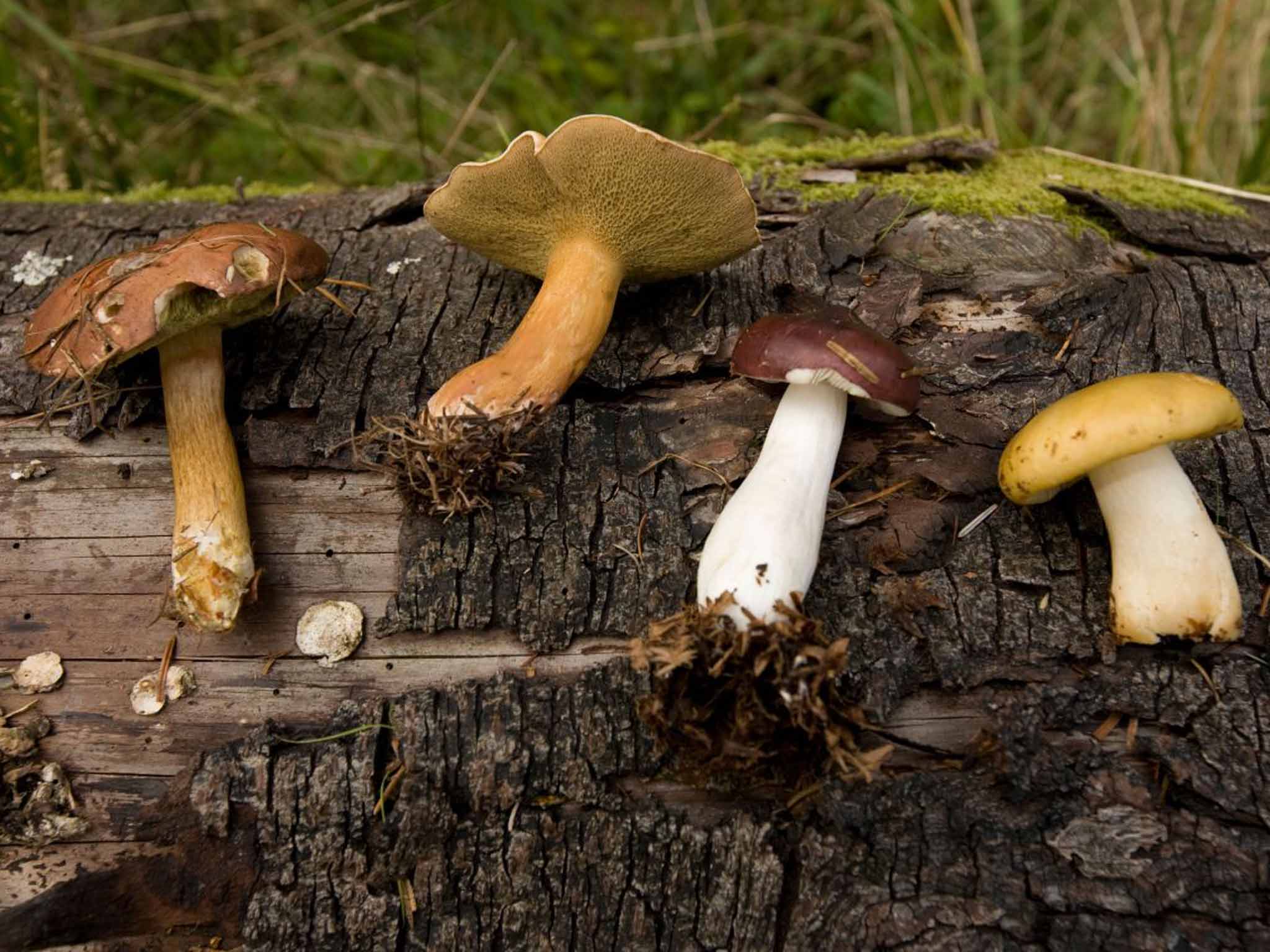The Independent's journalism is supported by our readers. When you purchase through links on our site, we may earn commission.
Foraging breaks: The experts who know their ceps from their death caps
It is the “season of mists and mellow fruitfulness” as Keats wrote, so forage for the flavours of our woodlands and coast, writes Paul Miles

Your support helps us to tell the story
From reproductive rights to climate change to Big Tech, The Independent is on the ground when the story is developing. Whether it's investigating the financials of Elon Musk's pro-Trump PAC or producing our latest documentary, 'The A Word', which shines a light on the American women fighting for reproductive rights, we know how important it is to parse out the facts from the messaging.
At such a critical moment in US history, we need reporters on the ground. Your donation allows us to keep sending journalists to speak to both sides of the story.
The Independent is trusted by Americans across the entire political spectrum. And unlike many other quality news outlets, we choose not to lock Americans out of our reporting and analysis with paywalls. We believe quality journalism should be available to everyone, paid for by those who can afford it.
Your support makes all the difference.
The forests are full of fungi and there's something magical about cooking up a feast using produce you've gathered yourself. But if you can't tell “chicken of the woods” from “death cap”, it might be your last supper, so sometimes it's best to go with the experts.
Fun guy
In 2008, Fergus Drennan lived solely on wild food for a year, documenting his diet in a monthly magazine column. He now runs intensive day courses on foraging and cooking with wild ingredients (fergustheforager.co.uk). In October he has some fungi foraging days near Canterbury where, he says, you might find “typically between 20 to 60 species or more”. The day ends with an early dinner, served in the woods, weather permitting. You might dine on spicy rosehip and beetroot soup, risotto with wild fungi, and seabeet and seaweed panna cotta with candied mushrooms. A one-day course costs £110pp, including meals.
Sweet treats
Autumn is also a great season for certain fruits. “Sloes and bullace [wild plum] are best picked for infused alcohols after the first frost, which can happen in October,” says Zoe Atterbury, who is leading short foraging walks as part of the Lyme Regis Walking Festival in October (07971 253 722; beyondbushcraft.com). “Hawthorn berries are ready, too: good for a delicious infused brandy. Rowan still has berries, for a pale pink jelly to accompany game.” Zoe's walks take place on 22 October and 23 October; about 1.5 hours; £10 per person.
Basket case
The Field Studies Council (field-studies-council.org), a registered charity, runs foraging and mushroom identification courses at 13 centres around Britain. There are still spaces on a two-day introductory Wild Food Heaven weekend at Blencathra, in the Lake District (23-25 October; from £210pp including accommodation and meals). Or why not try a Hedgerow Basketry course? Held at Flatford Mill in Suffolk, this weekend will teach you to weave a basket from materials found in hedgerows and gardens. From £227pp including accommodation and meals; takes place from 13-15 November.
Down on the farm
Farm Stay UK (02476 696909; farmstay.co.uk) has just begun offering foraging courses at some of its properties. For example, you can stay at Orroland Holiday Cottages, on the coast in Dumfries & Galloway, and enjoy a day out with local forager Mark Williams (gallowaywildfoods.com). Spend the day discovering various wild treats such as seaweed, wild parsnips and edible flowers before sipping on wild cocktails and dining on your harvest.
The farm has two cosy stone cottages (sleeping six or seven) and a big house for 14, all with real fires. Three nights in October costs from £336 self-catering for six people. Foraging days cost from £85pp and must be booked in advance.
Identity parade
“Search for Dead Man's Fingers, Amethyst Deceivers and Angel's Bonnet,” says the National Trust (nationaltrust.org.uk) about a guided fungal foray on Halloween morning in the woodlands at the foot of Skirrid Fawr in the Sugarloaf and Usk valley, Monmouthshire. The walk is free (donations welcome) and your expert guides will be from the Gwent and Herefordshire Fungus Survey. The emphasis is on identification rather than foraging – but you can take a few of the edible finds home with you. The National Trust has other fungi identification walks at locations including Devil's Dyke, the New Forest, Hardcastle Crags and more.
Join our commenting forum
Join thought-provoking conversations, follow other Independent readers and see their replies
Comments